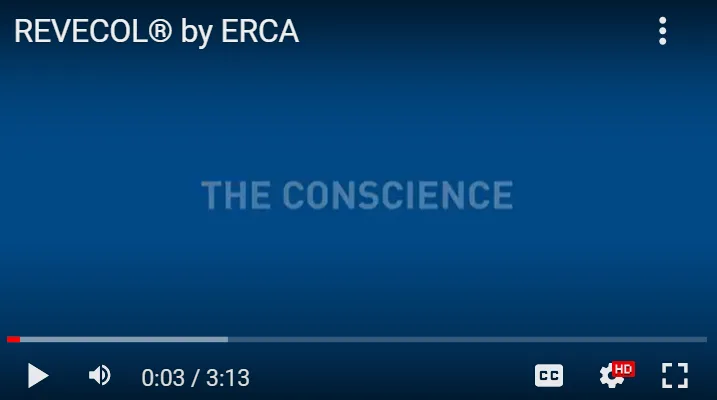
Over a decade ago, the European Commission committed to ultimately replace animal testing. Yet still today, the acceptance of existing non-animal testing remains low in Europe. With the imminent revision of REACH, the question remains: how can we develop an assessment framework that reflects scientific progress and incorporates New Approach Methodologies or ‘NAMs’ into the REACH process to the greatest extent possible?
To support transition to an animal-free regulatory system, ECHA recently organised a workshop which brought together key stakeholders to discuss critical needs to enable faster progress. Improving the safety assessment of chemicals is crucial for promoting innovation in safe and sustainable products. However, there are challenges to overcome: like it is important to recognise that NAMs are not a one-to-one replacement for current testing methods, and there is also a need to build confidence in the effectiveness of NAMs-based safety assessments compared to animal testing. The ECHA workshop aimed to build a common understanding of what NAMs can achieve in the short and long term.
“We don’t believe that the protection health and the environment versus no animal testing is an either / or situation. We think we can do both.”
Sharon McGuinness, Executive Director, ECHA
Representing Cefic, Chantal Smulders, Global Head of Product Safety Science and Regulatory Advocacy at Shell shared industry views on how to achieve a modernised and accelerated chemical safety assessment. She presented a comprehensive four-point action plan to facilitate a responsible transition, increase acceptance, and foster confidence in the application of NAMs.
“The future of regulatory testing is animal free. One day soon we can get there if we put in place the right regulatory framework and support ”,
Tilly Metz, Member of the European Parliament
1. Agree on a framework for the current application of NAMs: what can we do now or in the short term?
We need an agreed-upon framework for the current application of NAMs, ensuring that they provide equal or even higher levels of protection compared to traditional methods. By establishing a solid foundation, stakeholders can gain confidence in the reliability and effectiveness of these transformative approaches.
There is widespread recognition that a revision of these [validation] processes is actually required to encourage timely uptake of fit-for-purpose NAMs”.
Joao Barroso – Scientific Officer at the European Union Reference Laboratory for Alternatives to Animal Testing
2. Build a long-term vision for a new hazard and safety paradigm and develop a roadmap towards it
To successfully transition, there needs to be a common and agreed-upon roadmap; one which charters the path towards a future where NAMs are the primary approach for chemical safety assessments. We need to map the required changes to the regulatory framework in the medium and long term, offer training and capacity building to support , as well as think about the needs of smaller businesses. This will provide clarity and direction for all stakeholders involved.
“We need to set up clear concrete and achievable milestones. Setting ourselves a long-term goal without the milestones that tell us that we are advancing and making progress will not be enough. And these milestones have to be the sign for the regulatory context.” Cristina de Avila, DG ENV, European Commission
3. Ensure international harmonisation of the application of NAM methodologies and mutual acceptance of data
Accelerating the uptake of NAMs will only be possible if implemented internationally in a harmonised and collaborative way. Varying approaches across different regions will only hamper the progress. By achieving mutual acceptance of data, different regulatory bodies and organisations can streamline their processes and reduce duplicative efforts. This must be supported by data reporting and data sharing, as well as a workable and straight forward Weight-of-Evidence for data interpretation. This will facilitate a smoother transition and encourage global collaboration in the adoption of NAMs.
“If we need to test in multiple frameworks and multiple regions of the world you can only make baby steps. So we need to do a synchronised change across the whole system.”
Chantal Smulders – Global Head of Product Safety Science and Regulatory Advocacy, Shell
“Standardisation is so important as it allows regulators to become more familiar with elements of the methods, rapidly assess adequacy of the information, and easily share and link information to existing sources of information on chemicals”
Patience Browne – Principal Administrator, Hazard Assessment and Pesticides Programmes, OECD
4. Improve uses and exposure information of registered substances
Improving the quality and accessibility of data will be critical for improving protection levels, and refined exposure metrics can help target testing needs. This will help regulators make more informed decisions and further advance the implementation of NAMs in chemical safety assessments.
“One could think about a system incorporating emissions, exposures, linked to the tonnage level with other information on uses and phys-chem properties, and use it to decide what is necessary for controlling the risk.”
Georg Streck – Policy Officer, REACH Unit, DG Grow, European Commission
There is a long road ahead towards the ultimate replacement of animal testing, but we believe that by developing a framework, creating a long-term vision, ensuring international harmonisation, and improving information on uses and exposure, we can pave the way for a safer and more sustainable future in chemical safety assessments.
Read more about Cefic’s viewson alternative approaches to animal testing.










